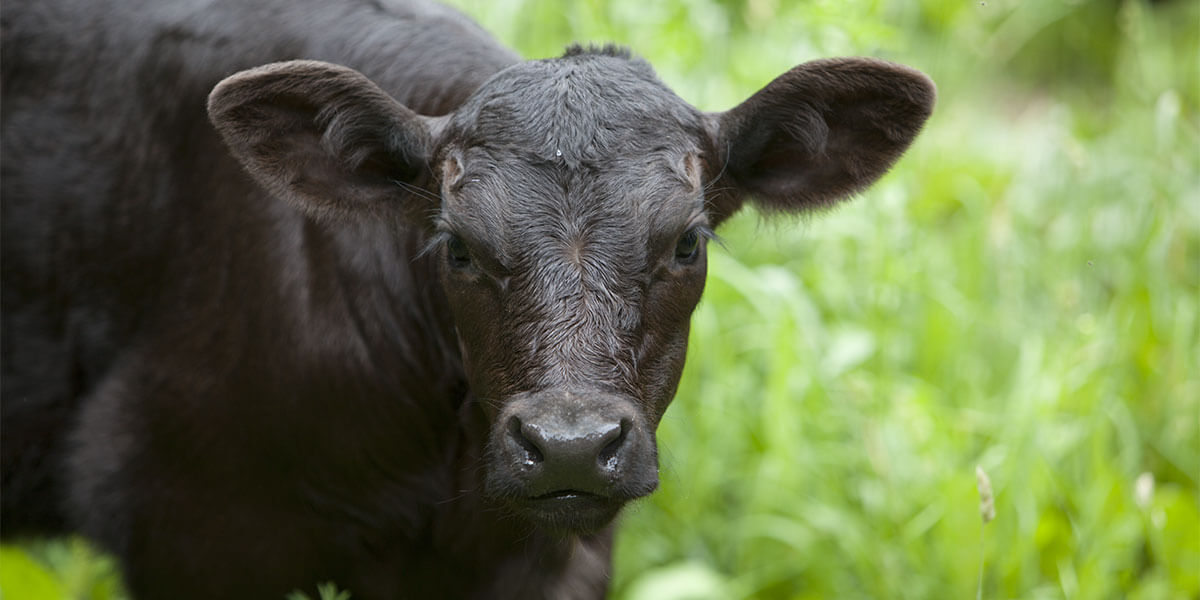Weaning is the most stressful time in a beef calf’s life. At this time, calves are being separated from their dams, and may be exposed to different types of feed and water sources than those with which they are familiar. Considering that cattle are creatures of habit that like the same things the same way every day, we can easily see why these sudden changes can create stress for them as they enter the next phase of their life.
A common, negative outcome we see from weaning stress is a decrease in feed intake, resulting in the calves taking in less nutrients, such as trace minerals, protein and overall energy each day. Even if the calves have started to consume some forage or creep feed before weaning, the stress will typically decrease their desire to eat.
This reduction in feed intake, coupled with stress, may ultimately lead to calves being energetically unable to fulfill the needs of the immune system, leaving them more susceptible to infectious diseases like coccidiosis, respiratory diseases such as Mannheimia haemolytica, Pasteurella multocida and mycoplasma, as well as viruses like infectious bovine rhinotracheitis virus (IBRV), parainfluenza virus 3 (PI3), bovine respiratory syncytial virus (BRSV) and bovine coronavirus.
Strengthening the calves’ immune system is key to jumpstarting their success as they head for the feedlot. A good preconditioning program, including a thorough vaccination schedule and performance trace mineral nutrition, can help calves overcome weaning stress, thereby improving the calf’s ability to fight immune challenges.
Read more: Supplementing Calves with Performance Trace Minerals Improves Feedlot Performance
How to Incorporate a Preconditioning Program
A preconditioning program presents an opportunity for cow-calf producers to limit or minimize the stressors that calves experience during weaning. Preconditioning programs typically last from 28 to 45 days, during which time calves are kept on the farm or ranch to get over the stress of weaning before they are transitioned into the feedlot where they experience additional changes in environment.
Ideally, these calves will be fence-line weaned and can still see, vocalize with and even get nose to nose with their mothers. When possible, allow calves to continue drinking from a similar water source and to consume similar feed to which they are accustomed. During this time, calves should also receive their booster vaccinations to help further build and fortify their immune system.
5 Tips for Your Preconditioning Program
- Provide a clean, dry environment to keep calves comfortable during the most stressful period of their lives. A dry dirt lot is fine, but muddy conditions add stress.
- Make water easy to find. If calves are used to drinking from stock tanks, adding a temporary stock tank to the pen is a good idea, even if an automatic water source is present. Be sure to place the water along the fence line so calves encounter it when looking for their mothers. This will increase their chances of staying hydrated amid the stress of weaning.
- Besides feed or hay, consider offering an additional nutrition source. Although calves may be apprehensive to approach the bunk, a molasses or byproduct-based tub containing Zinpro® Availa® 4 can be placed in the middle of the pen or along the fence line as a way to deliver performance trace minerals to calves until they consume a mixed ration. Zinpro Availa 4 can be delivered to calves pre- and post-weaning by a variety of feedstuffs, from tubs, to liquids, to loose minerals and even in pelleted or grain-based supplements.
- Wait a couple of weeks before administering booster vaccines. The vaccination process is a stressful one for calves, so it’s important to wait three or four weeks post-weaning to allow them to recover from some of that initial weaning stress. Ideally, those calves will have received their first round of vaccinations three or four weeks prior to weaning. Be sure to discuss your vaccination protocol with your veterinarian and always follow manufacturer instructions.
- Complete tasks like castrating, branding and dehorning at least a few weeks before weaning to minimize the stress during the weaning and preconditioning period.
Feed Performance Trace Minerals for an Enhanced Immune Response
Trace minerals like those found in Zinpro Availa 4 are critical to helping weaned calves mount a rapid and robust immune response to challenges they encounter. If calves are more resilient to health challenges as a result of being supplemented with performance trace minerals during weaning, they will start consuming feed earlier and gaining weight faster when they enter the feedlot.
Zinc and manganese are important for improving skin integrity — the first immune line of defense — and join copper and selenium as key antioxidant components. Cobalt, while not often considered in immune system discussions, is required for vitamin B12 synthesis, which is crucial for energy metabolism that ultimately fuels the immune system. Additionally, iron is heavily regulated by the body since it is a factor for pathogen growth; therefore, the body’s regulation of iron is important for preventing infections.
Zinpro® Performance Minerals® are more absorbable than inorganic sources and can therefore ensure weaned calves are receiving adequate trace mineral nutrition despite a typical drop in feed intake. This not only helps improve calf growth performance, but also contributes to a calf’s ability to mount a response to immune challenges, like IBRV.
Several Zinpro® research studies have revealed that calves fed performance trace minerals prior to and after weaning had a 21% reduction in morbidity.
To learn more about including performance trace minerals as a part of your calf preconditioning program, contact your Zinpro representative today.

